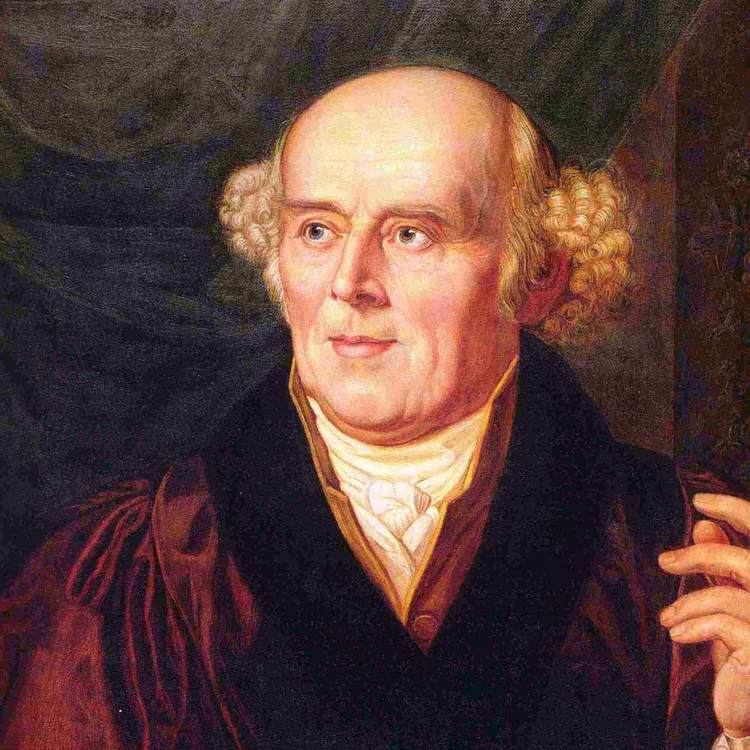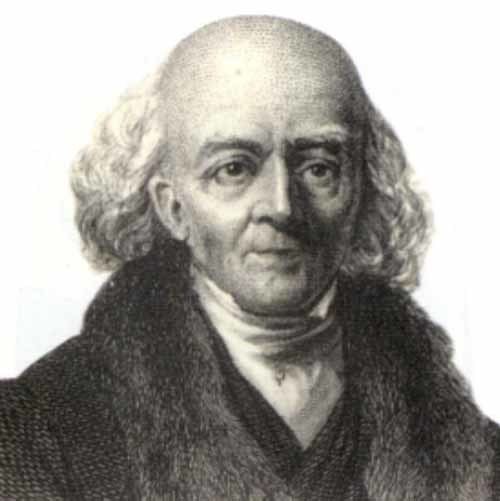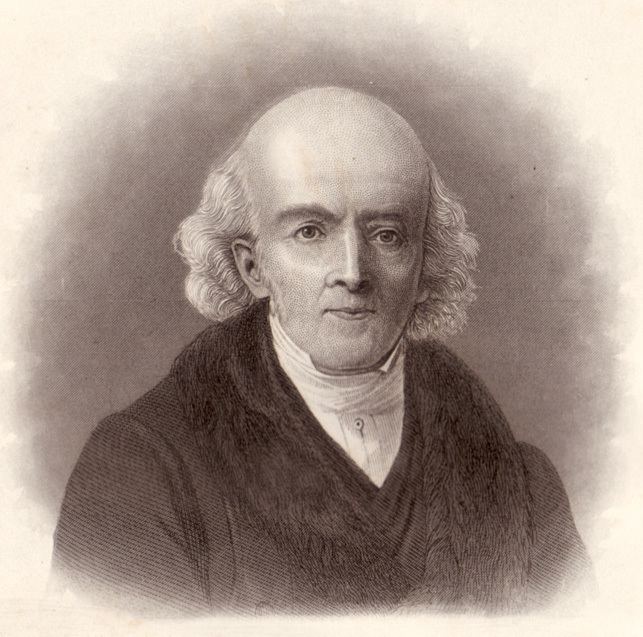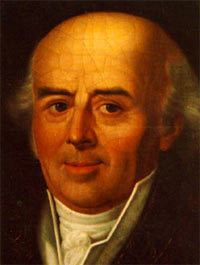Nationality German Name Samuel Hahnemann | Role Physician Fields Homeopathy | |
 | ||
Parents Johanna Christiana Spiess, Christian Gottfried Hahnemann Books The Organon of the Heali, Homeopathic Materia Medica, The Lesser Writings of Samuel H, Organon of the Medical Art, The Chronic Diseases Similar People James Tyler Kent, Constantine Hering, Robert Ellis Dudgeon, Kas Oosterhuis | ||
Best tribute to dr samuel hahnemann
Christian Friedrich Samuel Hahnemann ( [ˈhaːnəman]; 10 April 1755 – 2 July 1843) was a German physician, best known for creating the system of alternative medicine called homeopathy.
Contents
- Best tribute to dr samuel hahnemann
- Homeopathy from samuel hahnemann to today
- Early life
- Medical practice
- Creation of homeopathy
- Development of homeopathy
- The coffee theory of disease
- Later life
- Descendants
- Writings
- References

Homeopathy from samuel hahnemann to today
Early life

Christian Friedrich Samuel Hahnemann was born in Meissen, Saxony, near Dresden. His father Christian Gottfried Hahnemann was a painter and designer of porcelain, for which the town of Meissen is famous.

As a young man, Hahnemann became proficient in a number of languages, including English, French, Italian, Greek and Latin. He eventually made a living as a translator and teacher of languages, gaining further proficiency in "Arabic, Syriac, Chaldaic and Hebrew".

Hahnemann studied medicine for two years at Leipzig. Citing Leipzig's lack of clinical facilities, he moved to Vienna, where he studied for ten months. After one term of further study, he graduated MD at the University of Erlangen on 10 August 1779, qualifying with honors. His poverty may have forced him to choose Erlangen, as the school's fees were lower. Hahnemann's thesis was titled Conspectus adfectuum spasmodicorum aetiologicus et therapeuticus. [A Dissertation on the Causes and Treatment of Cramps]
Medical practice

In 1781, Hahnemann took a village doctor's position in the copper-mining area of Mansfeld, Saxony. He soon married Johanna Henriette Kuchler and would eventually have eleven children. After abandoning medical practice, and while working as a translator of scientific and medical textbooks, Hahnemann travelled around Saxony for many years, staying in many different towns and villages for varying lengths of time, never living far from the River Elbe and settling at different times in Dresden, Torgau, Leipzig and Köthen (Anhalt) before finally moving to Paris in June 1835.
Creation of homeopathy
Hahnemann was dissatisfied with the state of medicine in his time, and particularly objected to practices such as bloodletting. He claimed that the medicine he had been taught to practice sometimes did the patient more harm than good:
My sense of duty would not easily allow me to treat the unknown pathological state of my suffering brethren with these unknown medicines. The thought of becoming in this way a murderer or malefactor towards the life of my fellow human beings was most terrible to me, so terrible and disturbing that I wholly gave up my practice in the first years of my married life and occupied myself solely with chemistry and writing.
After giving up his practice around 1784, Hahnemann made his living chiefly as a writer and translator, while resolving also to investigate the causes of medicine's alleged errors. While translating William Cullen's A Treatise on the Materia Medica, Hahnemann encountered the claim that cinchona, the bark of a Peruvian tree, was effective in treating malaria because of its astringency. Hahnemann believed that other astringent substances are not effective against malaria and began to research cinchona's effect on the human body by self-application. Noting that the drug induced malaria-like symptoms in himself, he concluded that it would do so in any healthy individual. This led him to postulate a healing principle: "that which can produce a set of symptoms in a healthy individual, can treat a sick individual who is manifesting a similar set of symptoms." This principle, like cures like, became the basis for an approach to medicine which he gave the name homeopathy. He first used the term homeopathy in his essay Indications of the Homeopathic Employment of Medicines in Ordinary Practice, published in Hufeland's Journal in 1807.
Development of homeopathy
Following up the pioneering work of the Viennese physician Anton von Störck, Hahnemann tested substances for the effects they produced on a healthy individual, presupposing (as von Störck had claimed) that they may heal the same ills that they caused. His researches led him to agree with von Störck that the toxic effects of ingested substances are often broadly parallel to certain disease states, and his exploration of historical cases of poisoning in the medical literature further implied a more generalised medicinal "law of similars". He later devised methods of diluting the drugs he was testing in order to mitigate their toxic effects. He claimed that these dilutions, when prepared according to his technique of "potentization" using dilution and succussion (vigorous shaking), were still effective in alleviating the same symptoms in the sick. His more systematic experiments with dose reduction really commenced around 1800-01 when, on the basis of his "law of similars," he had begun using Ipecacuanha for the treatment of coughs and Belladonna for scarlet fever.
He first published an article about the homeopathic approach in a German-language medical journal in 1796. Following a series of further essays, he published in 1810 "Organon of the Rational Art of Healing", followed over the years by four further editions entitled The Organon of the Healing Art, the first systematic treatise and containing all his detailed instructions on the subject. A 6th Organon edition, unpublished during his lifetime, and dating from February 1842, was only published many years after his death. It consisted of a 5th Organon containing extensive handwritten annotations. The Organon is widely regarded as a remodelled form of an essay he published in 1806 called "The Medicine of Experience", which had been published in Hufeland's Journal. Of the Organon, Robert Ellis Dudgeon states it "was an amplification and extension of his "Medicine of Experience", worked up with greater care, and put into a more methodical and aphoristic form, after the model of the Hippocratic writings."
The coffee theory of disease
Around the start of the nineteenth century Hahnemann developed a theory, propounded in his 1803 essay On the Effects of Coffee from Original Observations, that many diseases are caused by coffee. Hahnemann later abandoned the coffee theory in favour of the theory that disease is caused by Psora, but it has been noted that the list of conditions Hahnemann attributed to coffee was similar to his list of conditions caused by Psora.
Later life
In early 1811 Hahnemann moved his family back to Leipzig with the intention of teaching his new medical system at the University of Leipzig. As required by the university statutes, to become a faculty member he was required to submit and defend a thesis on a medical topic of his choice. On 26 June 1812, Hahnemann presented a Latin thesis, entitled "A Medical Historical Dissertation on the Helleborism of the Ancients." His thesis very thoroughly examined the historical literature and sought to differentiate between the ancient use of Helleborus niger, or black hellebore, and the medicinal uses of the "white hellebore", botanically Veratrum album, both of which are poisonous plants.
Hahnemann continued practicing and researching homeopathy, as well as writing and lecturing for the rest of his life. He died in 1843 in Paris, at 88 years of age, and is entombed in a mausoleum at Paris's Père Lachaise Cemetery.
Descendants
There are a few living descendants of Hahnemann's older sister Charlotte (1752–1812), but the living descendants of Hahnemann himself derive from one of his daughters.
Hahnemann's daughter, Amelie (1789–1881), had a son: Leopold Suss-Hahnemann. Leopold emigrated to England, and he practised homeopathy in London. He retired to the Isle of Wight and died there at the outbreak of World War I in 1914. Dr Leopold Suss-Hahnemann's youngest daughter, Amalia, had two children, Winifred (born in 1898) and Herbert. William Herbert Tankard-Hahnemann (1922–2009) was Winifred's son. He served as a Major in the British Army during World War II, and then had a career in the city of London. He was at one point appointed as a Freeman of the City of London. Mr William Herbert Tankard-Hahnemann, the great-great-great-grandson of Samuel Hahnemann died on 12 January 2009 (his 87th birthday) after 22 years of active patronage of the British Institute of Homeopathy. The William Tankard-Hahnemann line continues with his son, Charles.
Writings
Hahnemann wrote a number of books, essays, and letters on the homeopathic method, chemistry, and general medicine:
